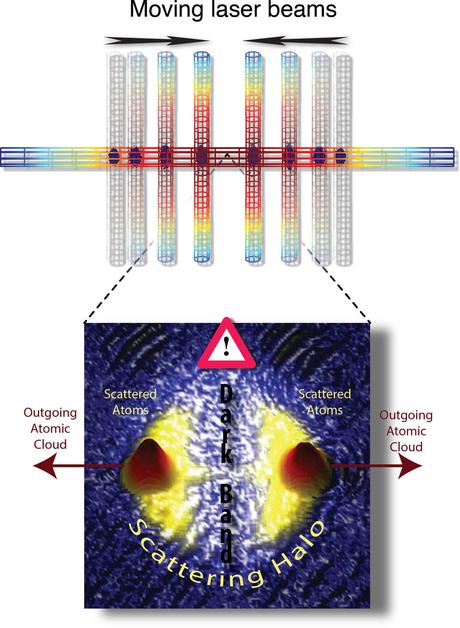Bending the rules of the Pauli exclusion principle

Physicists from the University of Otago have used steerable ‘optical tweezers’ to split minute clouds of ultracold atoms and slowly smash them together to directly observe a key theoretical principle of quantum mechanics — the Pauli exclusion principle.
In a study led by Associate Professor Niels Kjærgaard, the scientists used extremely precisely controlled laser beams to confine, accelerate and gently collide ultracold atomic clouds of fermionic potassium. The atomic clouds had a temperature of one millionth of degree Kelvin above absolute zero.
The Pauli exclusion principle places fundamental constraints on the behaviour of groups of identical particles and underpins the structure and stability of atoms as well as the mechanical, electrical, magnetic and chemical properties of almost all materials. It predicts a forbidden zone along a meridian of the spherical halo of scattered particles, represented in the Otago experiments by a dark band.
“This dark band results from a ‘no side-stepping’ rule that the principle dictates, which is that indistinguishable fermions cannot scatter out at 90° to the collision axis,” Associate Professor Kjærgaard explained.
Interestingly, when PhD student Ryan Thomas looked more closely at his data, he found that under some conditions the images of scattering haloes from the particles would actually display side-stepping — the dark band would be less dark.
“This is not because the rule suddenly breaks down, but because there can be situations where a particle scatters multiple times with consecutively new collision axes,” Associate Professor Kjærgaard said.
Published in the journal Nature Communications, the team’s finding is said to have important implications for gaining insights into the particulars of the underlying processes governing multiple particle scattering.
Aerosol test for airborne bird flu developed
The low-cost sensor detects the virus at levels below an infectious dose and could lead to rapid...
Superelastic alloy functions in extreme temperatures
The titanium-aluminium superelastic alloy is not only lightweight but also strong, offering the...
Water-repellent glass breaks new ground
An innovative and non-toxic process using ultrasonic sound waves can alter the surface of glass,...




